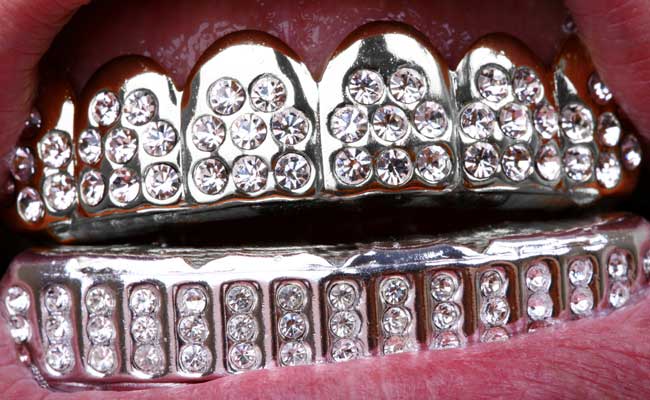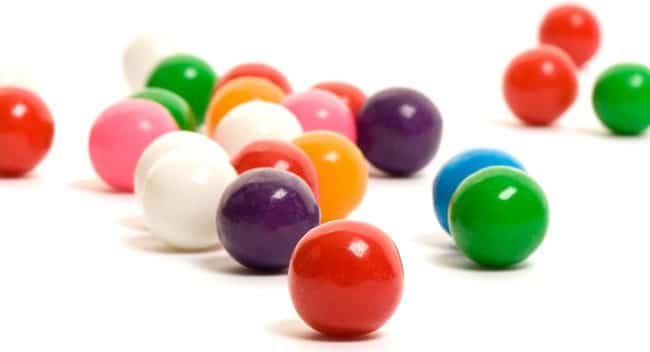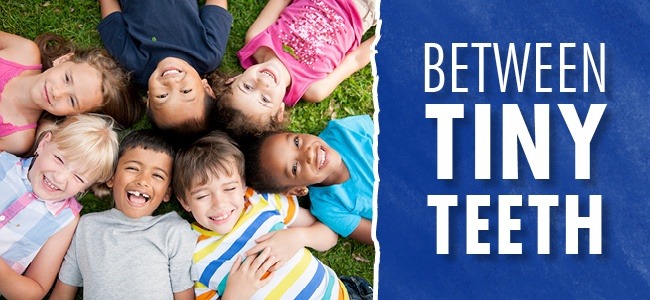Do Whitening Toothpastes really work?

Do Whitening Toothpastes Really Work? A bright, white smile is something that many people desire. Unfortunately, lifestyle habits such as smoking, drinking coffee or tea, and eating certain foods can cause teeth to become discolored or stained over time. As a result, many people turn to whitening toothpastes as a way to brighten their teeth and restore their smile. But do these products really work? Whitening toothpastes are designed to remove surface stains from teeth and help brighten your smile. They often contain abrasive particles, such as baking soda, that help scrub away surface stains, as well as chemicals like hydrogen peroxide that can help break down stains and remove discoloration. While the effectiveness of these ingredients can vary, many people report that they have had success using whitening toothpastes to improve the appearance of their teeth. One study published in the Journal of Clinical Dentistry found that a whitening toothpaste containing baking soda and hydrogen peroxide was significantly more effective at removing surface stains than a standard toothpaste. Another study published in the Journal of the American Dental Association found that a toothpaste containing baking soda and peroxide was effective at removing extrinsic stains caused by coffee and tobacco. While these studies suggest that whitening toothpastes can be effective, it’s important to keep in mind that the results may not be as dramatic as those achieved with professional teeth whitening treatments. Additionally, whitening toothpastes may not be effective for deeper or more stubborn stains caused by medications or certain medical conditions. It’s also important to note that not all whitening toothpastes are created equal. Some may contain higher levels of abrasive particles that can potentially damage tooth enamel if used excessively. Others may contain ingredients that can irritate sensitive teeth and gums. When choosing a whitening toothpaste, it’s important to look for products that have been tested and approved by dental professionals. Products that carry the American Dental Association (ADA) Seal of Acceptance have undergone rigorous testing to ensure that they are safe and effective for use. It’s also important to follow the instructions for use carefully. Whitening toothpastes should be used as directed, typically for two minutes twice a day, and should not be used excessively. Overuse of abrasive toothpastes can potentially damage tooth enamel and increase sensitivity. While whitening toothpastes can be an effective way to remove surface stains and brighten your smile, they should not be used as a substitute for good oral hygiene habits. Brushing twice a day with a fluoride toothpaste, flossing daily, and visiting your dentist regularly for cleanings and checkups are all important steps in maintaining good oral health. If you are looking for more dramatic results, professional teeth whitening treatments may be a better option. Your dentist can recommend the best treatment option based on your individual needs and goals. Whitening toothpastes can be an effective way to remove surface stains and improve the appearance of your teeth. While their effectiveness may vary depending on individual factors, many people report success using these products. However, it’s important to choose a product that has been tested and approved by dental professionals, use it as directed, and not rely on it as a substitute for good oral hygiene habits. If you are looking for more dramatic results, professional teeth whitening treatments may be a better option. If you are in the Palmdale, CA area and looking for professional teeth whitening options, AC Sierra Dental Center can help. Their experienced team of dental professionals can provide customized whitening treatments that are safe and effective. They can also provide guidance on how to maintain your bright new smile and keep your teeth healthy. Remember, maintaining good oral hygiene habits is essential for overall dental health, and regular visits to the dentist for cleanings and checkups can help prevent and address any dental concerns. By taking care of your teeth and utilizing the resources available, you can achieve the bright, healthy smile you desire.
A Brief History of Grills

A Brief History of “Grills” Grills (or grillz) are, if not popular, at least fairly recognizable these days. Made of precious metals (gold and platinum being the most common) and often studded with diamonds, most grills are removable and worn over the front teeth. But where do they come from? Although many people would point to Nelly and his 2005 song, “Grillz,” as the starting point for the trend, they’re actually much older than that. (And no, we’re not just talking about rappers like Slick Rick, Flavor Flav, and Big Daddy Kane from the 80s and 90s, either). We’re talking ancient history. In ancient Italy, between 800 and 200 BC, wealthy Etruscan women wore teeth woven together with gold wire the thickness of a rubber band. The wire held together teeth that had been removed and were placed back into the mouth, so they made eating difficult. The practice wasn’t necessarily common, but archaeologists found documentation of around 20 sets of teeth woven together in this way. Etruscan civilization vanished as the Romans took over Italy, and this fashion trend died with it. In Latin America, Mayans actually cut small holes into their teeth and filled them with precious stones, typically jade. Again, this was a trend that only royalty and the wealthy could afford. Although the Mayan civilization has disappeared, many people in southeastern Mexico, Belize, Honduras, and Guatemala still wear gold tooth jewelry today. In ancient Filipino myths, the creator of the world, a deity named Melu, had gold teeth—and during what was the Middle Ages in Europe, Filipinos were filing down their teeth and decorating them with gold. Some of these decorations included gold bands that covered the entire front row of teeth; the oldest date to around 1300 AD. As the Renaissance began in Europe, dentistry was becoming more scientific and less superstitious—and Giovanni de Arcoli, a 15th century Italian professor of medicine, became the first author known to recommend filling cavities with gold to preserve them. Grills started appearing in rap and hip hop videos in the 80s, and became even more popular as Southern rap began to take off in the 90s and early 2000s. And now, they’ve jumped into mainstream culture, as celebrities like Madonna, Miley Cyrus, Katy Perry, and even Ryan Lochte have sported them in recent years. You might expect a dentist to come out against grillz as a health hazard, but no studies have proven that they’re bad for your teeth. As long as they’re removed and the teeth are brushed and flossed as appropriate, they shouldn’t cause health problems. Some metals can cause irritation; if it causes a rash, or bleeding, or other problems, just stop. Similarly, don’t clean them with anything toxic to ingest (like most jewelry cleaners), and don’t try to attach them permanently to your teeth with glue. But if you want to wear a grill, and you use some common sense and take care of your teeth, you’ll be part of a long tradition of dental jewelry. We can’t recommend a jeweler to create your grill, but if you have any questions about dental instruments—either ornamental or for health reasons—please give us a call at 661.202.3542 and we’ll be happy to answer your questions.
Four Foods That Can Damage Your Teeth

Last month, we looked at foods and drinks that can stain your teeth, but whiteness isn’t the only measure of healthy teeth. There are lots of foods that can chip your teeth or damage dental work in your mouth when you eat them. What are some of these problem foods? Your [LOCATION] dentist can warn you about some of the biggest culprits when it comes to chipped teeth, loose fillings, and broken crowns. Ice On a hot summer day, it’s great to fill a tall glass with ice and pour in some soda, lemonade, or tea to help cool down. You’re right if you assume that sugary drinks are bad for your teeth (they are!), but they’re bad in an over-the-long-term kind of way. In fact, lemonade and soda are also quite acidic, which isn’t good for your tooth enamel, either. However, it’s the ice that can actually chip your teeth if you chew it. Other hard foods can damage your teeth, too, so be careful when you’re eating things like baguettes, hard pretzels, and biscotti. Popcorn Lots of people enjoy buttered popcorn while sitting in a cool, air-conditioned movie theater, but unpopped kernels can definitely ruin the fun. They’re hard enough to chip a tooth if you crunch down on one of them by accident or on purpose. However, popcorn actually poses a double threat. The thin shell that covers the kernel can actually get stuck between your teeth or between your tooth and gum, giving bacteria a source of food and promoting tooth decay. Fruits with pits What do olives, cherries, dates, and peaches all have in common? They all have pits, of course, and those pits can damage teeth. If you accidentally bite into a pit, you can definitely crack or loosen a crown—or damage regular tooth enamel. Candy Pretty much every type of candy can damage your teeth. Hard candies can chip teeth if you bite on them or chew them up; if you suck on them and let them dissolve slowly, you’re basically giving your teeth (and the bacteria in your mouth) a sugar bath. Chewy candies, like caramels or taffy, can stick to your teeth, increasing the risk of cavities, or stick to fillings and crowns, loosening them. But sour candies are probably the most damaging of all because they combine three dangers to your teeth all in one. They’re loaded with sugar and they stick to your teeth, but the sour flavor actually comes from acids, which eat away at tooth enamel. You’re probably noticing a theme by now. Hard foods can damage your teeth. We’re not trying to you away from enjoying the sorts of treats you love. However, if you’re eating something that could chip your teeth, pay attention while you’re eating it. If you’re eating something that could damage your teeth in another way, remember to drink some water to rinse out sugars and acids. And always brush your teeth and floss after you’ve eaten any of the foods on this list. If you’ve damaged a tooth or lost a filling because of something you ate, give your Palmdale dentist a call at 661.202.3542 to make an emergency appointment. Come on in, and we can get your damaged tooth fixed right away!
Dental Product Series: Teeth Whitening

We all have our vices. Things like a couple of glasses of red wine with dinner, that cup of joe (or three) to start your day, and smoking all take a toll on the color of your teeth. Whether you are getting ready for your wedding day, aren’t ready to give up on the things you enjoy partaking in, or would just like boost in your smile, there are many reasons to have your teeth whitened. With so many options available today, how do you know which is best for you? The types of product you need will depend on your budget and how much whitening you are looking to do. Read on to see how you can get your pearly whites back to being pearly… and white. Basic Teeth Whitening Products There are many dental products out there that claim to be able to whiten teeth. These include gum, toothpaste, and mouthwash. While these products promote themselves as whitening teeth, they’re typically not very effective. The American Dental Association states that there two kinds of stains whitening products target. For surface, or extrinsic, stains, these products may be able to help. For deeper, or intrinsic, stains, these products don’t have enough whitening agent, and your teeth aren’t exposed to the agents long enough, to remove deeper stains. These products may not be able to whiten your teeth to where you want them, but they can be useful in maintaining a bright smile after using something a little stronger. Whitening Strips Whitening strips are an over-the-counter product that works better at whitening your teeth. They typically come with two strips in a container, one each for your top and bottom teeth. With these strips, you’ll normally leave them on for 20-30 minutes per session, allowing the whitening agent more time to do its work. Whitening strips can be used multiple days in a row, but also can cause tooth sensitivity. While this sensitivity isn’t a long-term problem, you should take a few days off of using the strips if your teeth become too sensitive. Take Home Kits Take-home whitening kits are a treatment you need to see your dentist for. Your dentist will make an impression of your teeth to create a tray to put the bleaching agent into. Once you have the trays (usually within one to two weeks of having impressions taken), your dentist will give you instructions on how to use your kit. In-Office Treatment This treatment is by far the most effective way to get your teeth whiter. Compared to the other teeth whitening products, chairside bleaching has the most potent bleaching agent, usually requiring a one-time dental visit for one to two hours. Your dentist will make sure you are a candidate for in-office bleaching and will take the proper precautions to ensure that the bleaching agent will avoid your gums, as it can irritate the tissue. Typically, the more effective a whitening product is, the more expensive its price. Depending on your situation, one treatment may be ideal for you, even if it’s not ideal for another patient. Often, in-office whitening treatment may be initially expensive, but in the long run, you get the color you were aiming for, and potentially save money by not trying several cheaper products that don’t deliver results. If you are unsure what option is best for you, give us a call at 661.202.3542 for more insight.
Tips for Teaching Your Kids to Floss

Even though baby’s first teeth are temporary, getting an early start on excellent dental hygiene practices, including both brushing and flossing, is essential to a lifetime of good oral health. Dental decay is one of the most common childhood diseases. According to the Centers for Disease Control and Prevention (CDC), 42% of children ages 2 to 11 have had cavities in baby teeth, and 21% of those ages 6 to 11 have had cavities in permanent teeth. Tooth decay not only poses a threat to tiny teeth, it can negatively affect a child’s whole health, as well as how they feel about themselves. One of the longest-lasting benefits of a healthy smile during childhood is the foundation for a healthy self-image. Start Early Brushing You should begin cleaning a baby’s gums after each feeding with gauze or a soft cloth starting immediately after birth. As soon as the baby teeth begin to erupt, you can use a soft-bristled child’s toothbrush to clean your toddler’s teeth. Continue brushing for them until they have the dexterity to take over (approximately around 6 years old). Flossing Flossing is difficult for small, untrained hands. Your child doesn’t have to begin brushing right away, but once their tooth surfaces are almost touching, plaque and food begin to settle in between teeth, which can lead to gum disease and tooth decay. At this point, they should begin learning to floss and doing so at least once a day. Teaching your child to floss can be tricky. The following steps will help you get them off to an easy start. Choose soft, flavored floss that’s gentle on your child’s gums and tastes good. Measure out a length of floss that runs from your fingers to your elbow. Wrap the floss around your child’s fingers as you would your own when flossing, but make sure it isn’t so tight that it cuts off circulation or causes any discomfort. Gently guide your children’s fingers, and show them how to glide the floss between the teeth. Show them how to make the floss into a C shape and curve it carefully beneath the gum line. Make sure they shift the floss to the next finger between each tooth so that they use fresh floss in each space. At first flossing may be difficult and even frustrating for your little one. They may not like wrapping the string around their fingers, or they may just find changing the wrap of the floss too difficult. Fortunately, there are a wide variety of child-friendly floss sticks available in different colors and flavors. They come in packs of 50 to 100, giving your little one room for error. Make sure they dispose of each floss stick after use. If your child is having an extra difficult time learning to floss, or if they have braces, consider trying the Waterpik Water Flosser for Kids. It’s made with a simple design that makes flossing easy for children over the age of 6. It is child safe and designed for small hands, so that your child’s frustration will be alleviated and their teeth will get cleaned properly. As your children develop, they will be able to execute flossing with ease and can decide whether to continue using their flossing stick or a Waterpik, or whether to take the more traditional route. For more information and help educating your child on the importance of their oral hygiene practices, call us today. We prepare you with information and instructions on how to clean your child’s teeth, as well as how to teach your child to clean their own teeth — or we can teach them with you.
